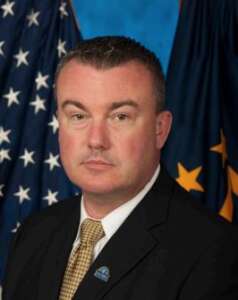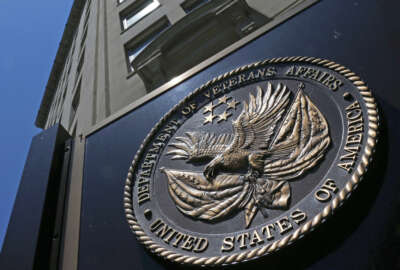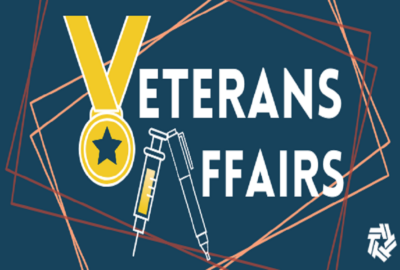VHA surpassed its hiring goals. Now it’s training HR experts to keep workforce growing
To bring in the next generation of its HR workforce, VHA is taking new graduates through a year of specialized training, to become HR professionals in areas where...
The Department of Veterans Affairs saw major growth in its workforce last year. That’s especially the case for its health care workforce.
The Veterans Health Administration more than doubled its target for workforce growth in fiscal 2023. But the agency is still dealing with a shortage of human resources experts to lead those hiring and onboarding efforts.
VHA about a year ago saw a 20% vacancy rate in its HR workforce. To keep up with the VA’s push to keep growing its workforce, VHA estimates it will need to hire about 1,000 HR professionals each year.
But VHA needs candidates with subject-matter expertise, the kind of expertise that other federal HR officials at other agencies might not have. So the agency is developing this HR talent in-house.
To bring in the next generation of its HR workforce, VHA is taking new graduates through a year of specialized training, to become HR professionals in areas where there’s a shortage of them.

David Perry, VHA’s chief officer for workforce management and consulting, said the agency’s HR-STAR program is now on track to deliver a new cohort of 80-100 trained HR professionals each month, ready to work in regions where they’re most needed.
“Oftentimes, we would hire and have to do on-the-job training, or we would get people in the real world that maybe didn’t actually have the depth of knowledge that’s needed to be successful in their job. And so, we really need to tackle that issue,” Perry said. “Obviously, we aren’t equipped to bring in 1,000 people, to do them all at one time … and so that’s where we came up with this cohort concept.”
The HR-STAR program saw its cohort graduate in October, and it’ll keep producing new VHA HR experts each month.
“That means November, December, and every month forward, we’ll be graduating a class that will do direct placement out to those regional offices,” Perry said. “And of course, we continue to hire so that we’re always bringing on a new cohort.”
VHA sees no shortage of applicants to replenish its HR ranks. About 10,000 individuals so far have applied for the HR-STAR program.
“Thankfully, we’ve had more candidates apply than we can actually take on,” Perry said. “That puts us in a good position to get a really highly competitive skill set in our candidates that are applying.”
New hires trained through the HR-STAR program have a working knowledge of the skills they need, but they’ll keep getting additional training to stay current with the VA’s latest pay and workforce policies.
Perry said it takes new HR hires about three years to fully understand everything about the job.
“Just because you spent a year in intensive training doesn’t mean that you’re a subject-matter expert. It’s just really getting you to a foundational level of training and HR to help you continue to grow,” he said.
The VA surged its hiring last year to stay ahead of demand under the PACT Act. The department also plans to keep growing its workforce to keep pace with demand from an aging veteran population.
Under Secretary for Health Shereef Elnahal told reporters last month that VHA is retaining employees at levels not seen since the start of the COVID-19 pandemic.
He said that improved retention was “a direct result of our HR teams across the system,” and their work implementing new recruitment and retention incentives under the PACT Act.
Elnahal highlighted VHA’s ongoing efforts to “hire the hirers,” and said the agency’s HR workforce is critical to making full use of workforce authorities under the PACT Act.
HR work at VHA is complex, and candidates with human capital experience at other federal agencies still require substantial training to understand the particulars of the VA workforce.
That’s because VHA has separate pay and workforce regulations for medical personnel — covered under Title 38 of the U.S. Code — and non-medical personnel — covered under Title 5.
To further complicate things, some VHA employees fall under a third “hybrid” category, which adheres to a blend of those Title 5 rules and regulations
“If you’re looking at an HR specialist, say at the Department of Energy, they’re only having to learn one set of rules and regulations around Title 5, whereas for us, when we bring you in, we have to teach you three. And so that definitely adds to the learning curve, but also just the day in and day out complexity,” Perry said.
VHA, through its HR workforce, is also looking to reduce the time it takes for candidates who have received a job offer to start working. Perry said the agency’s current time to fill a vacant position is about 114 days.
To address this problem, VHA held a nationwide national onboarding surge event last November. During the event, the agency completed all the onboarding steps for more than 12,800 new employees — nearly double its goal.
Perry said VHA, following the surge event, is shortening the window to complete onboarding steps when it makes a job offer to candidates.
“What we’ve taken as a best practice, and seems to be very successful, is that you can actually have a hiring fair, and then get a lot of those onboarding steps done the same time that you’re making an offer to a candidate,” he said.
Copyright © 2025 Federal News Network. All rights reserved. This website is not intended for users located within the European Economic Area.
Jory Heckman is a reporter at Federal News Network covering U.S. Postal Service, IRS, big data and technology issues.
Follow @jheckmanWFED





